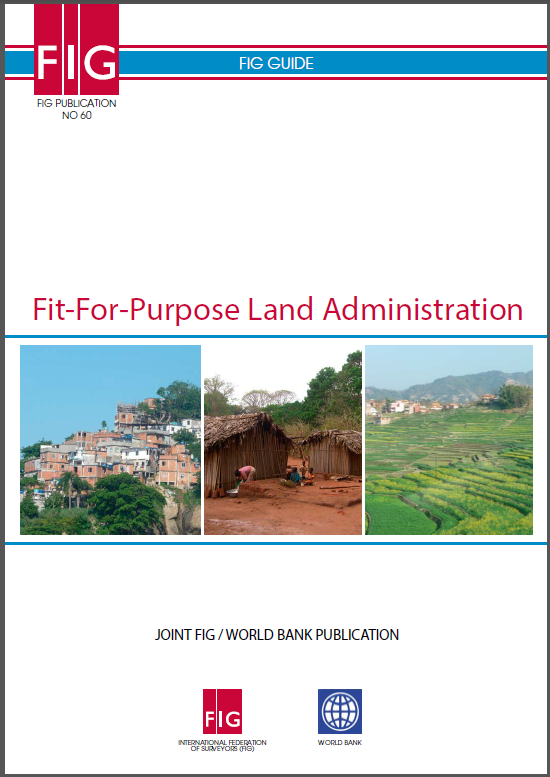Resource information
The current solutions to delivering land administration services have very limited global outreach; 75 percent of the world's population do not have access to formal systems to register and safeguard their land rights. The majority of these are the poor and the most vulnerable in society and without any level of security of tenure they constantly live in threat of eviction. For example, foreign investors through large scale land acquisitions have attained more than 30 million hectares of land in largely poor and middle-income countries since 2000; many indigenous people have lost rights to their land. This creates significant instabilities in society and severely limits their ability to participate in economic development. The pressure to change and provide more appropriate and efficient land administration services and strengthen security of tenure is growing within global political circles. Land was prominent on the agenda for the G8 and G20 meetings in 2013 and land indicators are planned within the replacement of the Millennium Development Goals (UN, 2013). The ability of the current land administration paradigm to quickly scale up to engage the excluded 75 percent of the world's population is impossible. It is time to rethink how land rights are recorded and managed. The key bottleneck in land administration services is the use of traditional, high accuracy, expensive land surveying techniques to record land rights. However, the adoption of spatially-fit-for-purpose and the continuum-of-continuums concepts will introduce flexibility and fundamentally change how land professionals record land rights. This approach provides a profound opportunity for the profession to positively react to these global land policy agenda challenges. This report provides a comprehensive overview of the fit-for-purpose approach by initially setting the land governance and global land policy agenda context, describing how to build fit-for-purpose land administration systems, recognising the benefits of implementing the approach, identifying the potential constraints and barriers for its adoption, highlighting the associated opportunities for land professionals and finally describing the capacity building required to achieve widespread adoption and secure tenure for all.




